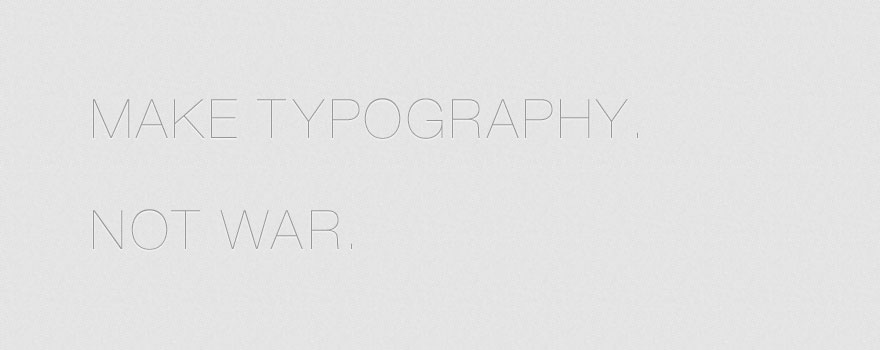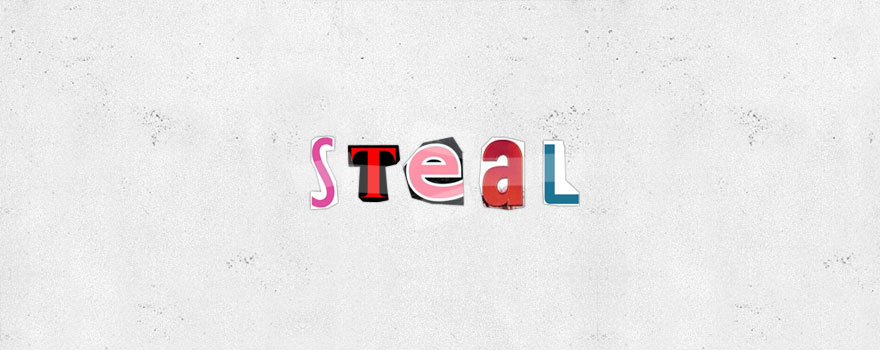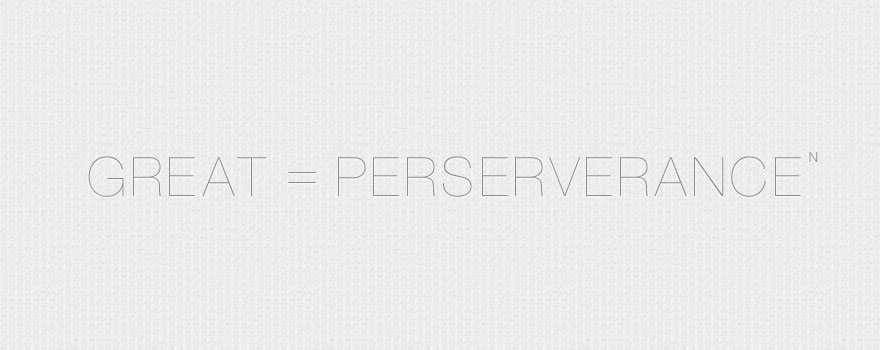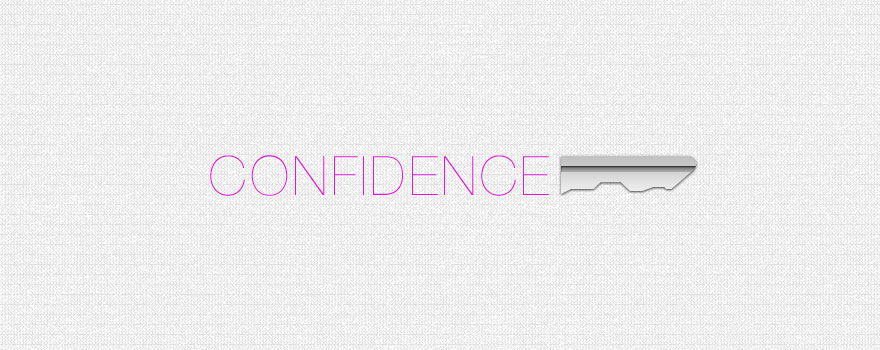1. Make good typography.

This is my #1 most essential tip for every designer. The famous Swiss designer, Emil Ruder, puts it perfectly.
Typography has one plain duty before it and that is to convey information in writing. No argument or consideration can absolve typography from this duty. A printed work which cannot be read becomes a product without a purpose. Today we are inundated with such an immense flood of printed matter that the value of the individual work has depreciated, for our harassed contemporaries simply cannot take everything that is printed today. It is the typographer’s task to divide up and organize and interpret this mass of printed matter in such a way that the reader will have a good chance of finding what is of interest to him.
Typography is the most powerful tool in every designer’s arsenal. Regardless of the medium, your typography must have a purpose, it must have hierarchy, and it must be beautiful. After all, we are in the business of conveying information and we do that through type.
2. When in doubt, simplify.

Keep it simple, stupid. Minimalism is timeless. Trends come and go, styles and tastes shift, but beautiful simplicity will always be classic. Too often designers get lost in extraneous details, when they should be taking the opposite approach by simplifying and subtracting. We can look at the success of this concept by examining companies such as Apple and Google, who have struck gold through their minimalistapproaches.
Perfection is achieved, not when there is nothing more to add, but when there is nothing left to take away. Antoine de Saint-Exupery
While the idea of perfection is a debatable subject, it is important for designers to contemplate simpler and more efficient ways to convey the information at hand. By taking a minimalist approach, a designer can create a better experience for the user that will remain timeless.
3. Steal

Good artists borrow. Great artists Steal. Pablo Picasso
Relax, you don’t have to reinvent the wheel every time. Great designers should constantly strive to mimic the world around them. The key is to draw inspiration from anything that resonates with you and then dissect, analyze, and use it as fuel for your design. Obviously, shameless counterfeits do not apply here, but there is a lot of stock in copying good design. Creating something truly unique is very difficult in this day and age. Why do you think there are so many design inspiration services like dribbble and behance?
Identifying the key principles and elements that make another design stand out can vastly improve your efficiency and more importantly your final product. Draw inspiration from anything that resonates with you. Whether it’s a title sequence in a film, a header on a website, or a font choice on a bus ad. Use these as the fuel for your creative fire.
4. The devil is in the details.

In other words, details are really important. The finishing details are what set great designs apart from all the others. If you are adopting a minimalist approach these details are even more important. You don’t want the details to distract from the experience. Rather, they should contribute and improve the aesthetic and functional goals. In contrast, by breezing over these details, you are not allowing your project to assume its full potential.
If you’re a web designer and are working with a web developer, force them to pay attention to the small details. Is the padding a little off center? Is the line height not correct? While individually small, these details can compound together to lift a project up or weigh it down.
5. Accept criticism.

To be more precise, accept criticism positively. You are not always right, and it is absolutely essential to keep an open mind. A time will undoubtedly come when a client’s/boss’s/co-worker’s opinion will differ from yours. It is important to recognize peoples’ differences and use them as a positive stepping stone moving forward. Put yourself in their shoes and you may see the project from a completely different perspective.
6. Know your audience.

Don’t try to appeal to everyone, that’s just painful. Do research. Get to know the target market. Research the industry, competitors, and target demographics. Identify what is being done well and what is not. Performing the proper groundwork in the beginning will pay huge dividends as you move into the creative process. This is working smart. To arrive at the best solution you need to fully understand the problem. Yes I know, designing is the fun part, but don’t skimp on the research. The better you understand your potential audience, the easier it will be to make them care about whatever you are doing.
7. Turn good ideas into great ideas.

This tip is often lost in the general consensus of deadline driven design. Too often designers get stuck on their first good idea. Take that initial good idea and take it to the next level. Make it a great idea.
As a college student, I was introduced to “mind maps”. Essentially the concept is to start with a large piece of paper and write down everything that comes to mind about a certain topic. You start with one or two words in the center and then branch off in as many random directions as possible. It is an exercise in hitting creative walls and pushing through them with brute force. It’s easy to chase that first light bulb and start producing as soon as possible. But, spend some more time on the idea and watch as the final result greatly improves.
8. Listen like you mean it.

To be a good designer, you must possess good listening skills. You need to learn to listen to your clients and fill in the blanks. Often times, clients will say “A” but in actuality they will mean “B.” You’ll need to identify these situations and do your best to clarify them with the clients.
Ask questions. Gather a list of questions that apply to every project. Add to this list over time. Do not be content with the information on hand. And if you’re meeting with your client face to face, take notes on a laptop. You do not write fast enough to keep up with a conversation and you’re going to miss things and stall the meeting. This way you can easily refer to your notes during and after the meeting and ask the appropriate questions.
9. Learn to talk about your work.

Confidence is key. Enthusiasm is contagious. Selling your work in the design industry is crucial. Arm yourself with good preparation. Have a good idea of the main points that you want to cover. Talk about the decisions you’ve made and the reasoning behind them, but keep it short. Go slowly. Pause and encourage the client to ask questions. Don’t be afraid of making mistakes. Learn from each interaction and grow from there.
Pay attention to the presentation of your work. Are you presenting a website? Don’t rely on the client to have a computer or even wifi. Bring your own. Print work? Make sure it is exceptionally comped on good paper. You’ve already invested a lot of time and energy into this product, so give it the dues it deserves.
10. Never stop learning.

I’m sure you’ve heard this before, but I can’t stress its importance. Don’t ever stop learning. Buy books, read blogs, attend lectures, follow industry leaders, travel, take up a new hobby. Whatever you want to do. There is an incredible amount of information at your disposal, so soak in as much as you can.
Keep up with technology and design trends. Don’t get left behind as your industry progresses. Seek inspiration from all walks of life. Keep your mind open and try new things. Learning is a huge part of what makes life interesting and it is a very rewarding and fulfilling experience. Ultimately, a thirst for knowledge will make you a much better designer and person.